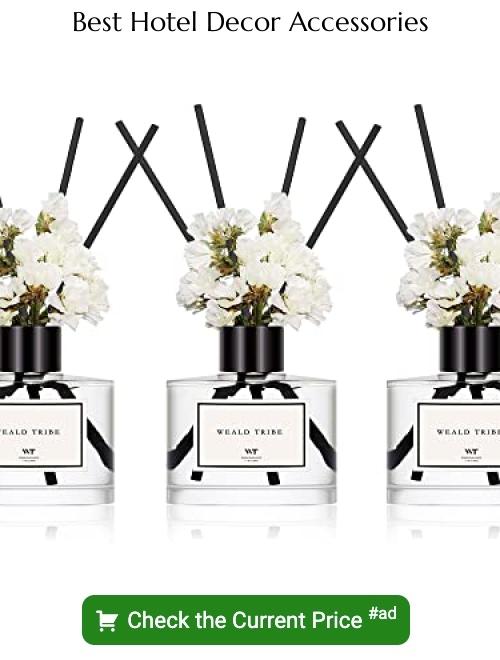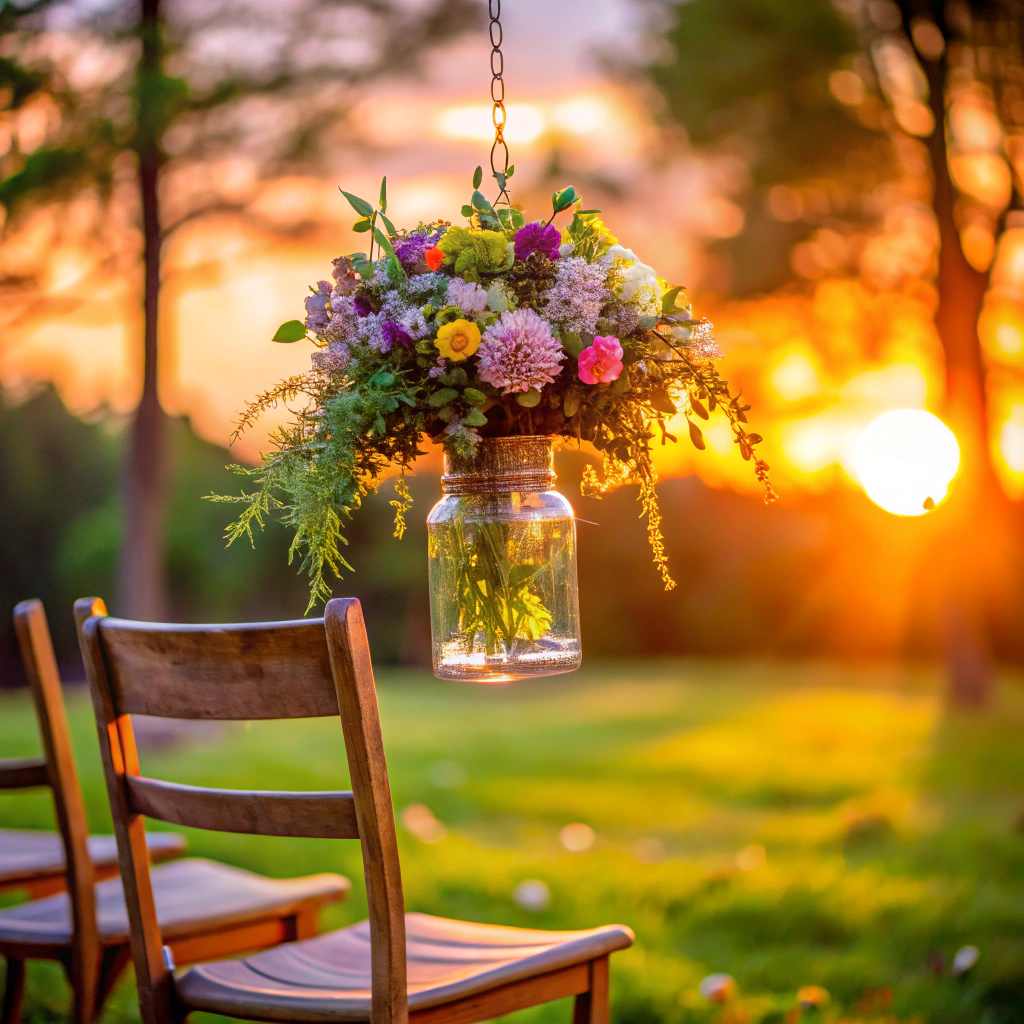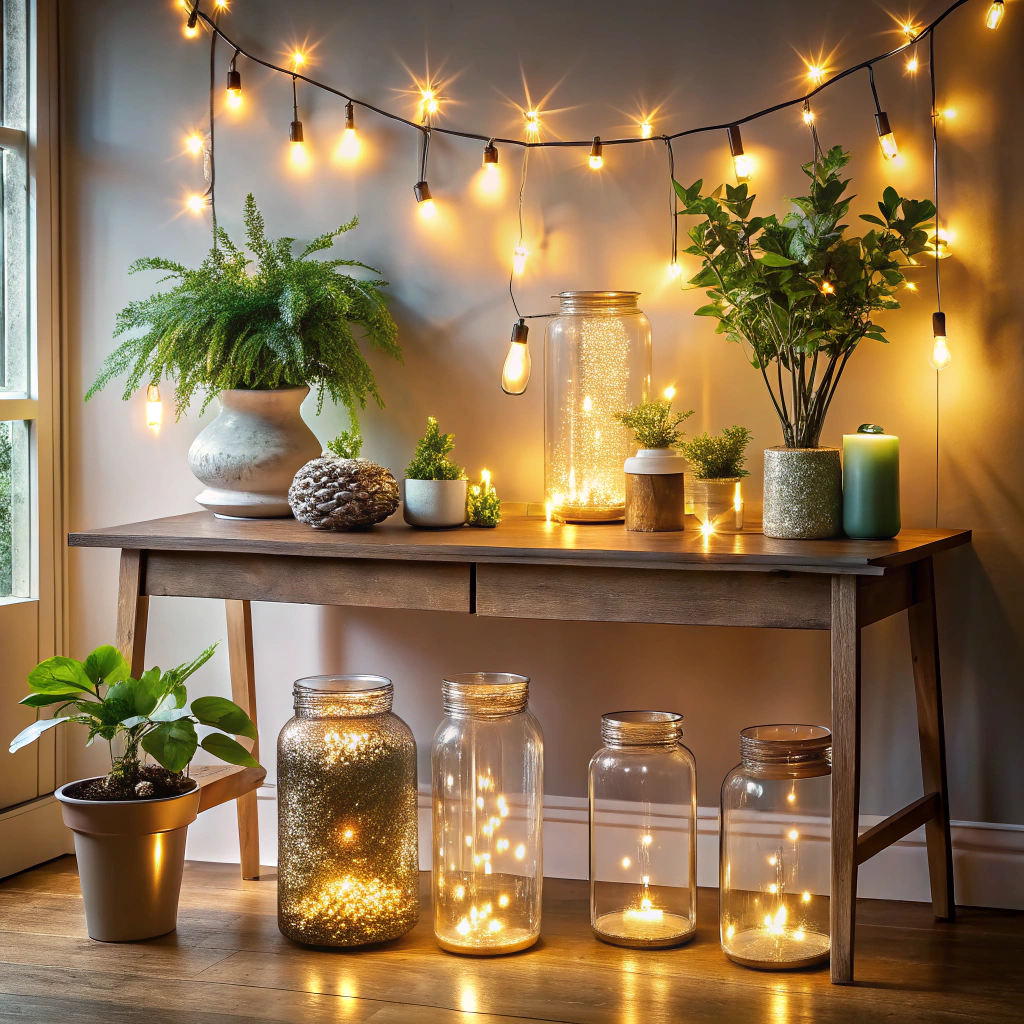Last updated on
Emulating the serene grandeur of a well-decorated hotel at home can be beguiling because it merges functionality with style, and this article is here to share creative decoration ideas to bring that hotel charm into your personal space.
I’m proud to have written and illustrated this comprehensive guide on 20 Hotel Decoration Ideas, and I hope you find it as inspiring and fun to explore as I found it to create.
Hotel decoration is an art that combines style, comfort, and functionality to create an inviting atmosphere for guests. From the lobby to the guest rooms, every detail matters. Whether you’re looking to create a luxury retreat or a cozy boutique experience, this article provides a plethora of hotel decoration ideas. It covers various design styles, color schemes, and functional tips to maximize space utilization. Delve deeper to uncover a treasure trove of ideas that cater to diverse tastes and budgets, ensuring your hotel stands out in the competitive hospitality industry.
Use Light, Neutral Paint Colors
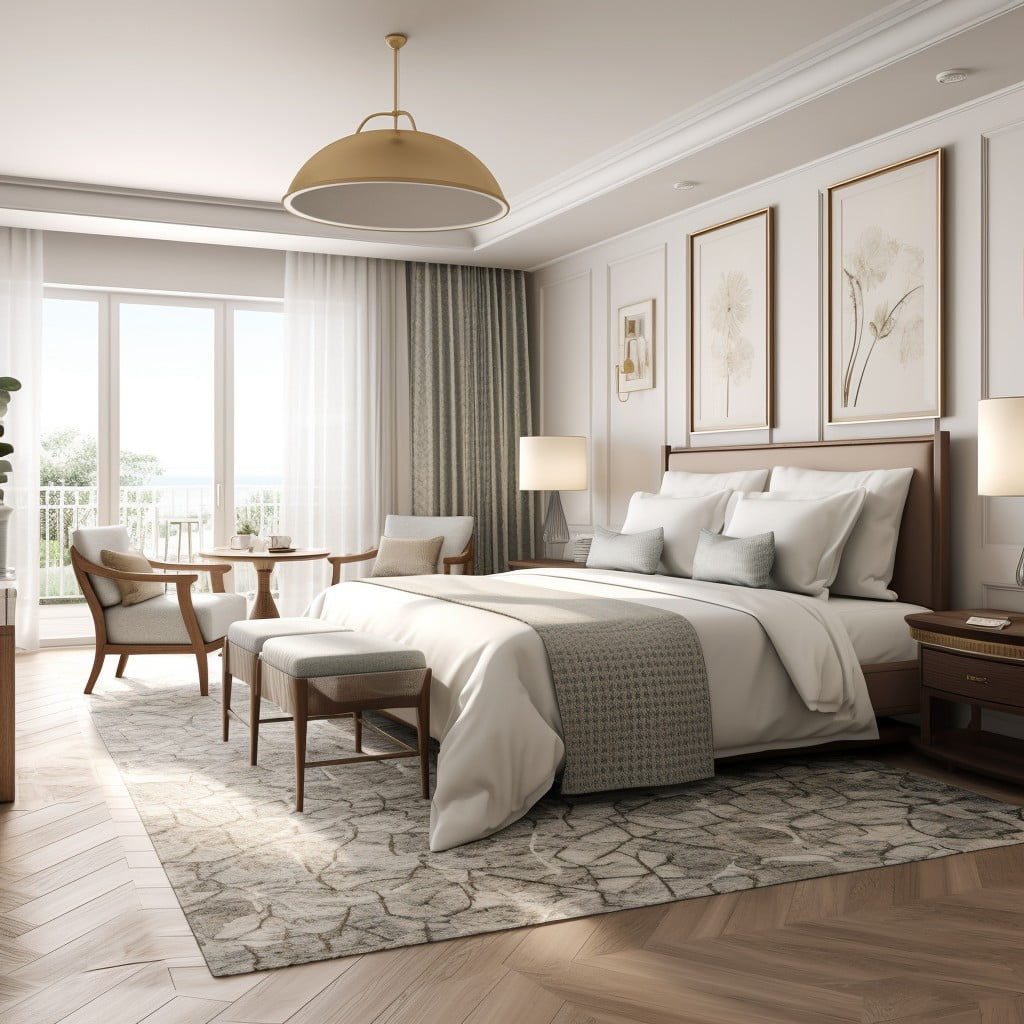
Maintaining a light and neutral color palette can work wonders for a hotel’s ambiance. This approach is ideal for enhancing natural light and creating a fresh, airy space.
Whites, beiges, gray, subtle blues, and pastel shades offer a timeless aesthetic and flexibility to incorporate different decorative elements without causing visual overwhelm. They also lend themselves well to any design style, whether minimalist, traditional, or modern.
Moreover, guests often appreciate these hues for their calming properties, contributing to a serene, welcoming atmosphere.
Add Contemporary Artwork On Walls
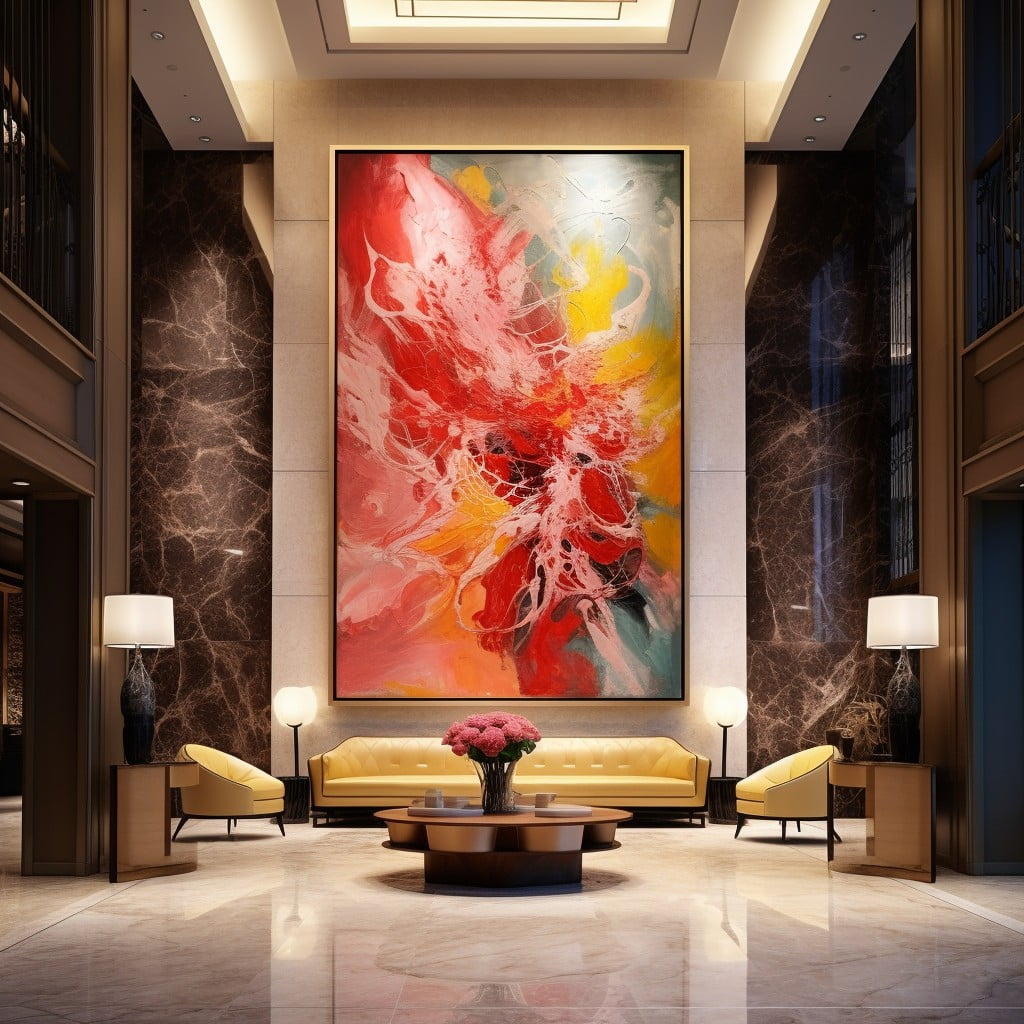
In a sophisticated space like a hotel, the visual appeal of contemporary artwork is significant. It infuses the environment with creative energy, making guests’ stays more engaging and their impressions lasting.
1. Size Matters: Consider the dimensions of the artwork in relation to the wall. Larger pieces create high impact, smaller ones jauntily fill corners or otherwise “empty” spaces.
2. Cohesion: The art should complement the hotel’s overall design and color scheme; it’s not an island unto itself.
3. Changing Exhibitions: Rotating the artworks keeps the milieu fresh and might encourage return visits from guests eager to see the latest display.
4. Reflect the Locale: Showcasing local artists or pieces reflective of the area’s culture fosters uniqueness and immersion.
5. Group Artwork: Forming a gallery wall harnesses a theme or an array of local artists’ works, condensing a powerful aesthetic statement into a concentrated area.
These guidelines bring the transformative power of artwork onto hotel walls, creating memorable impressions.
Include Ambient Lighting Options
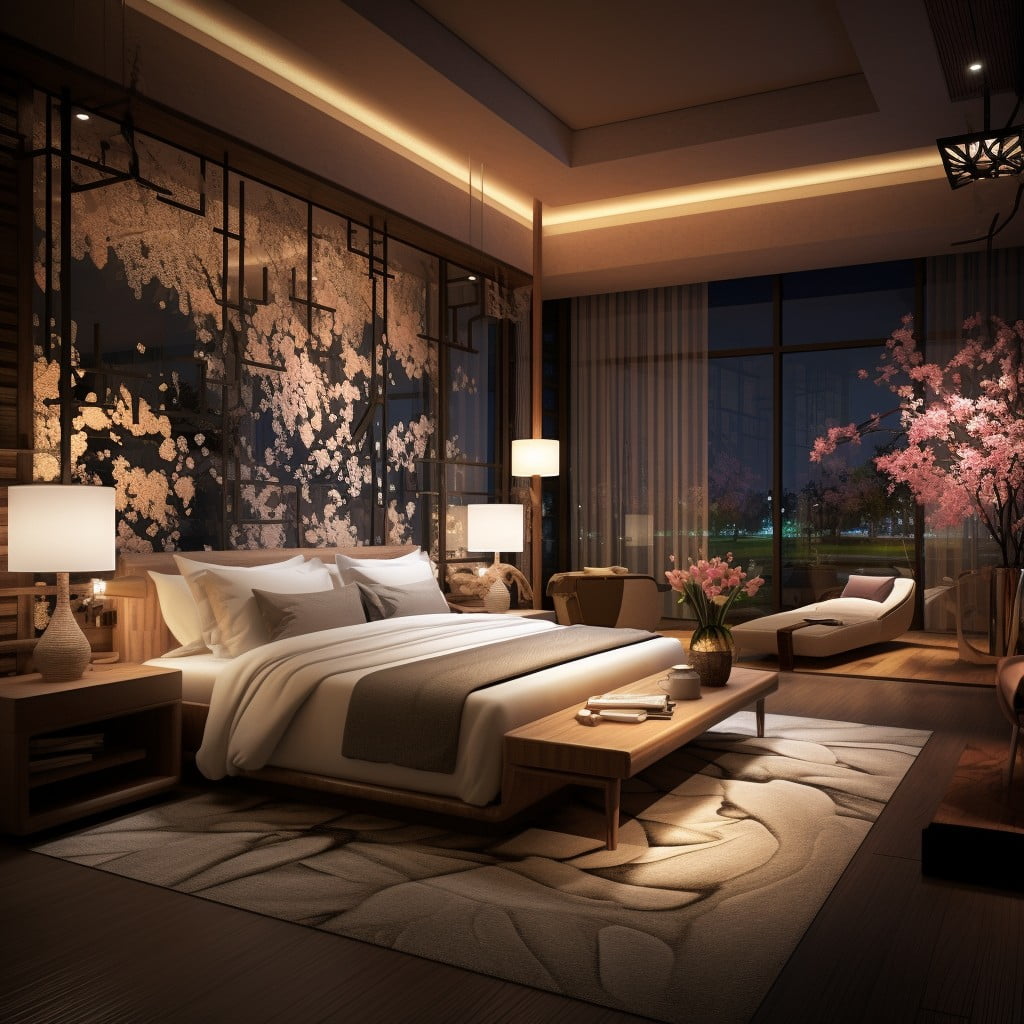
Selecting diverse sources of light that can be controlled independently provides guests the flexibility to adjust illumination as per their mood and the time of day. Here’s how you can pull it off effectively:
- Start with layering your lighting, blending different types – general, task, and accent.
- Incorporate dimmers for overhead lights to control brightness levels as needed.
- For a warm and inviting glow, consider adding table lamps, sconces, or floor lamps.
- Remember that well-lit pathways, whether through underfoot lights or softly glowing wall fixtures, are essential for safety and convenience.
- A well-illuminated desk or workspace is crucial in business suites.
- Lastly, consider LED light strips under bathroom vanities or around mirrors, for a touch of elegance.
Remember, varied light sources work synergistically to create an ambient atmosphere. Thus, the right fusion can greatly enhance a room, making guests feel relaxed and comfortable.
Place Large Mirrors in Corridors
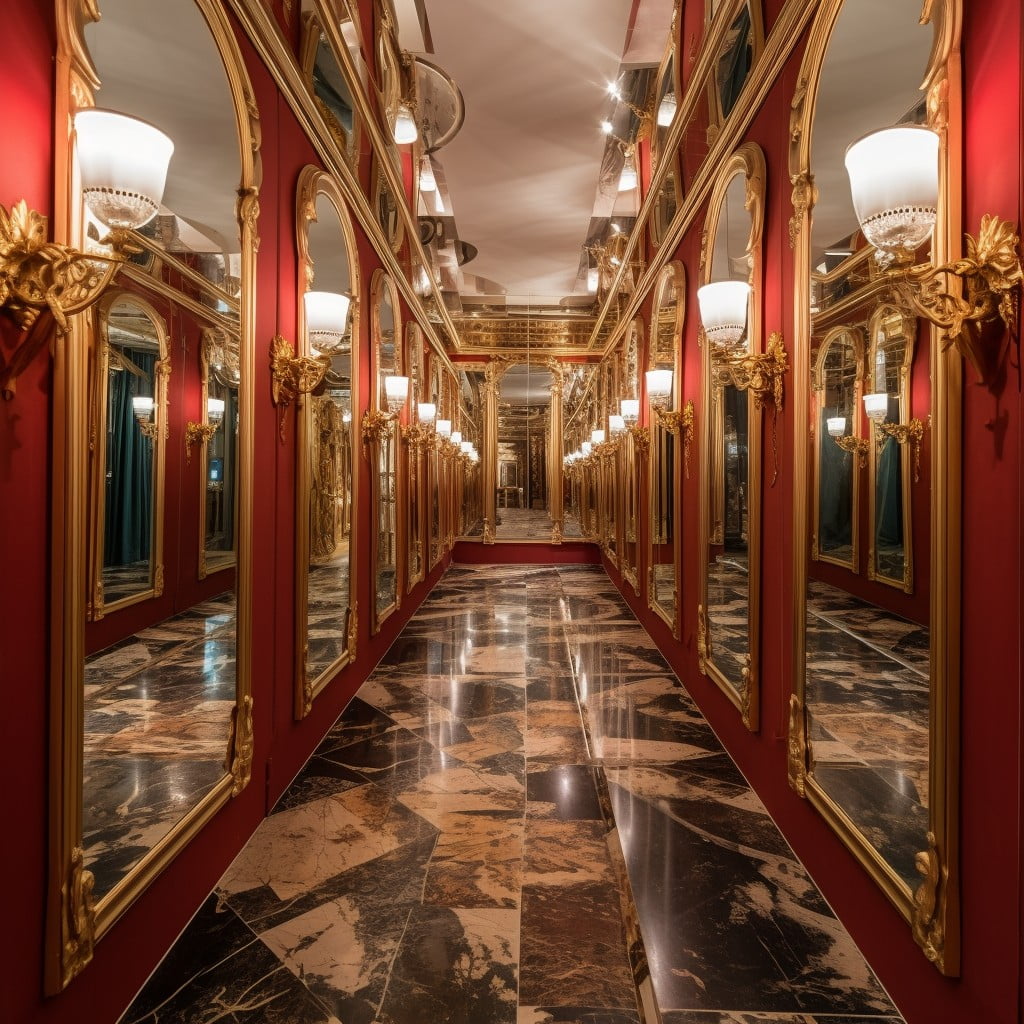
The careful placement of mirrors in hotel corridors can magnify both light and space. To make hallways feel brighter and more welcoming, hang mirrors directly across from windows. This will reflect natural light back down the corridor, enhancing visibility and creating an airy, open atmosphere.
Alternatively, position mirrors at the end of a long corridor to give the illusion of an extended space. Mirrors don’t have to be plain–consider choosing designs in shapes, frames, or surface finishes that echo the hotel’s theme or color scheme. Remember to secure mirrors properly to prevent accidents; use professional installation if necessary.
Use a Mural Wall in the Lobby
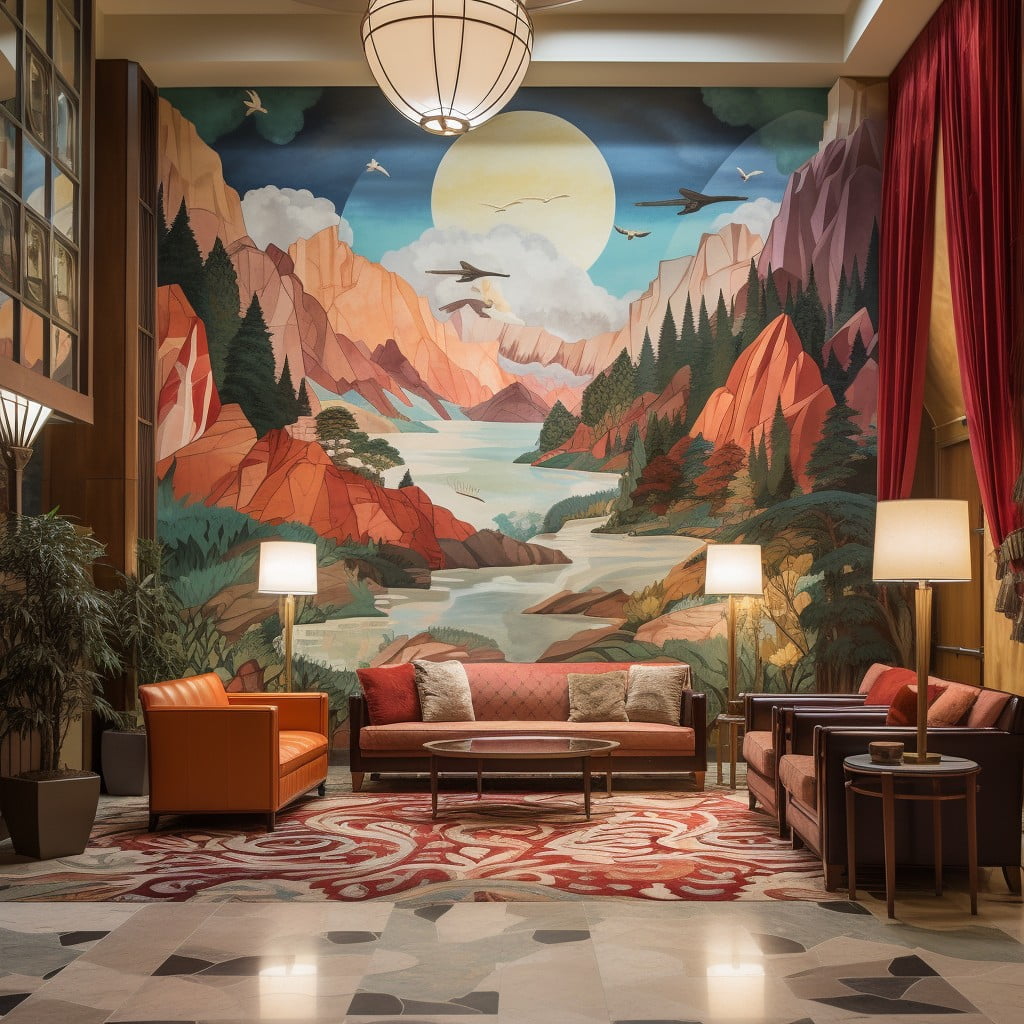
A grand mural wall has the instant ability to capture attention while setting the tone for the rest of the hotel’s design. It’s not just about painting a wall but creating an experience. When done right, the visual draw is undeniable. Think of themes that reflect the brand’s identity, perhaps something local or historical. Using vibrant colors can infuse the space with energy, while soothing hues can conjure a serene atmosphere.
An added benefit of murals is the potential for social media exposure—visitors love to take selfies with unique backgrounds! Consider this space as an opportunity not just to embellish your lobby, but also as a visual marketing tool. However, it is essential to hire a professional muralist to ensure high-quality work. Don’t forget to add appropriate lighting to accentuate the mural and make it stand out, even in the evening hours.
Maintain consistency in style throughout the hotel to create a seamless transition from the lobby. The mural should not seem out of place but instead serve as the introductory chapter to the story told by your hotel’s overall decor theme. This design decision might require some investment, but for a spectacular first impression, it is worth every penny!
Install Underfloor Heating in Bathrooms
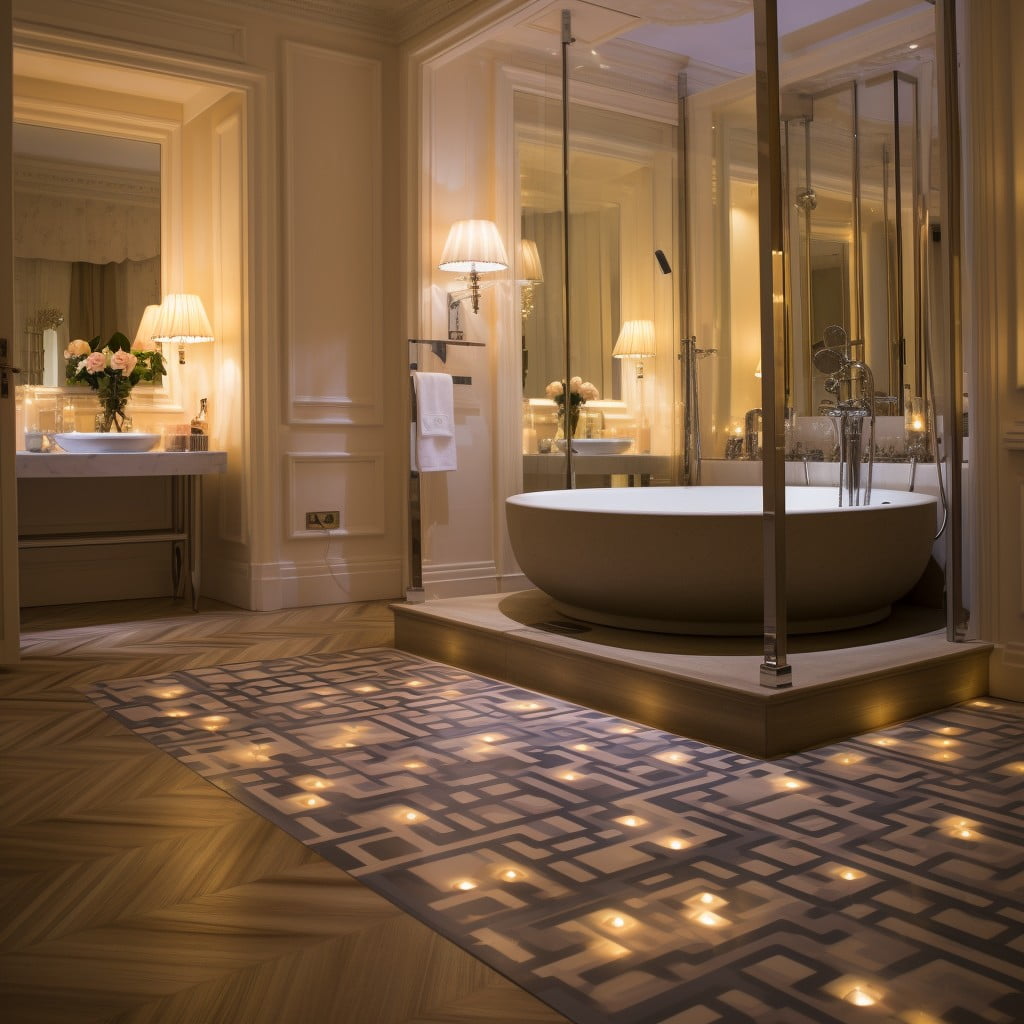
Moving forward with enhancing guest comfort, one could consider an amenity as subtle yet impactful as underfloor heating in the bathrooms. The luxury of stepping onto a warm floor after a hot shower adds an extra layer of comfort and relaxation for guests, especially in cold weather locations.
Installing underfloor heating can be achieved in two ways: electric coil, or hydronic, which involves circulating warm water through pipes installed under the floor. Electric coil is often less complicated to install, while hydronic provides more efficiency for larger spaces. Regardless of the method, incorporating this feature into your bathroom design can offer a pleasing touch of cozy luxury that will be greatly appreciated by guests.
It’s also worth noting that underfloor heating helps reduce the amount of dust and allergens in the room, having health benefits that could be enticing to health-conscious guests. Furthermore, this invisible amenity saves space, as you won’t need traditional radiators.
When it comes to energy efficiency, underfloor heating excels as it distributes heat evenly across the room. Thanks to this, you can run the system at a lower temperature to achieve the same level of warmth as traditional heating systems, thereby saving energy and reducing bills. It’s an investment in long-term cost efficiency and environmental friendliness.
The key lies in working with professionals for installation to ensure safety regulations are met and any potential future maintenance is minimized. Remember, adding underfloor heating in a hotel bathroom is not just about driving up warmth, but also about adding that invisible touch of luxury and comfort – a reminder that the smallest details often hold the biggest impact.
Create a Themed Room Design
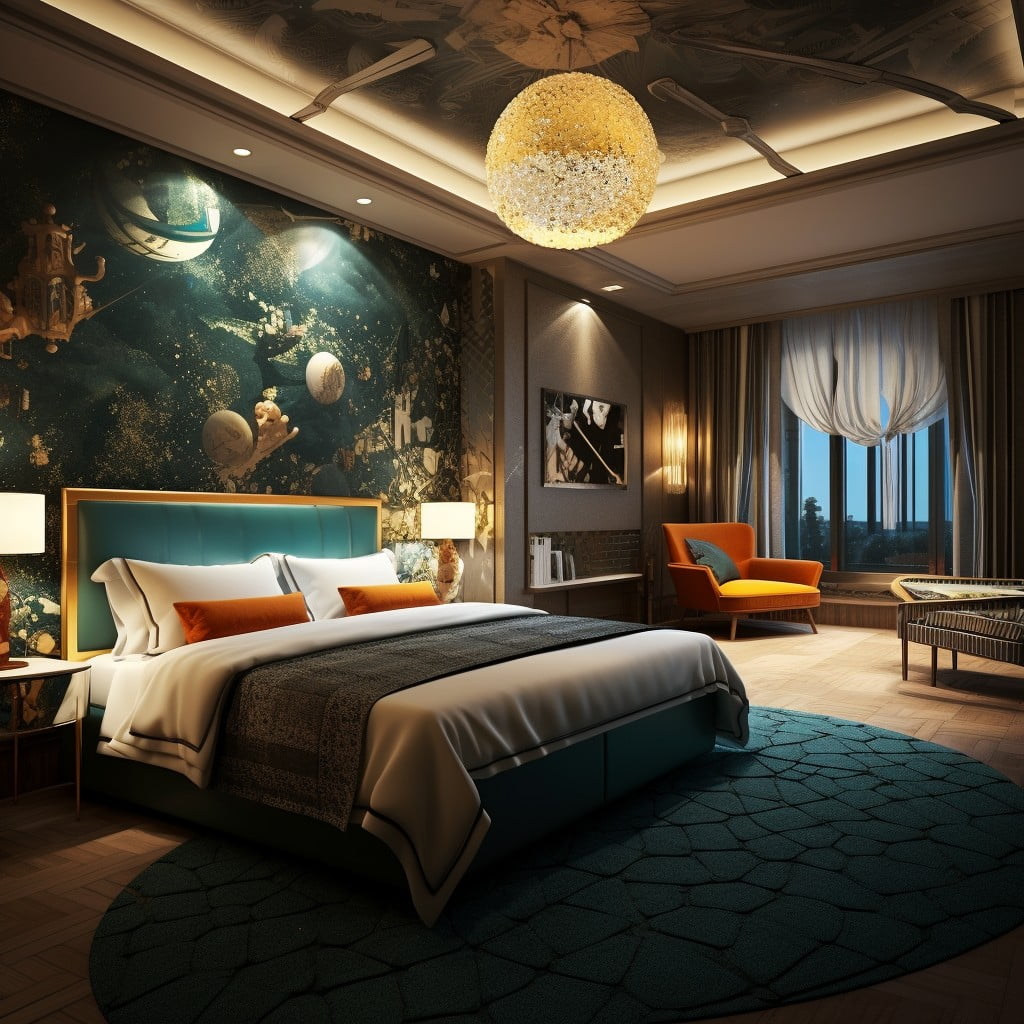
Stepping into a well-executed themed room can transport guests to another place, era, or even state of mind, making their stay a truly unique experience. The magic lies in meticulously choosing design elements that align with the chosen theme.
1. Research Potential Themes: Start by exploring a variety of themes. Consider aspects like geographic location, rich cultural heritage, or natural landscapes.
2. Elements of Design: Inject theme through wallpapers, fabrics, artwork, and custom furniture. For a beach-inspired room consider, light blue walls, sand-colored upholstery, and nautical-themed accessories.
3. Cohesion is Key: It’s essential for the chosen theme to flow seamlessly from room to room. Consistency in color palette and design accents are crucial to maintain this flow.
4. Never Compromise Comfort: A well-themed room is visually pleasing, but it’s equally important that it is comfortable and functional for your guests.
5. Appeal to Senses: Extend themes to scents and sounds to fully immerse your guests. For example, ocean sounds accompany a beach theme, or pine-scented candles complement a forest motif.
Remember, an aesthetically cohesive, thoughtfully themed design can make a lasting impression on your guests and set your hotel apart. Stick to these key principles and bring your unique vision to life.
Install a Modern Fireplace in the Lobby
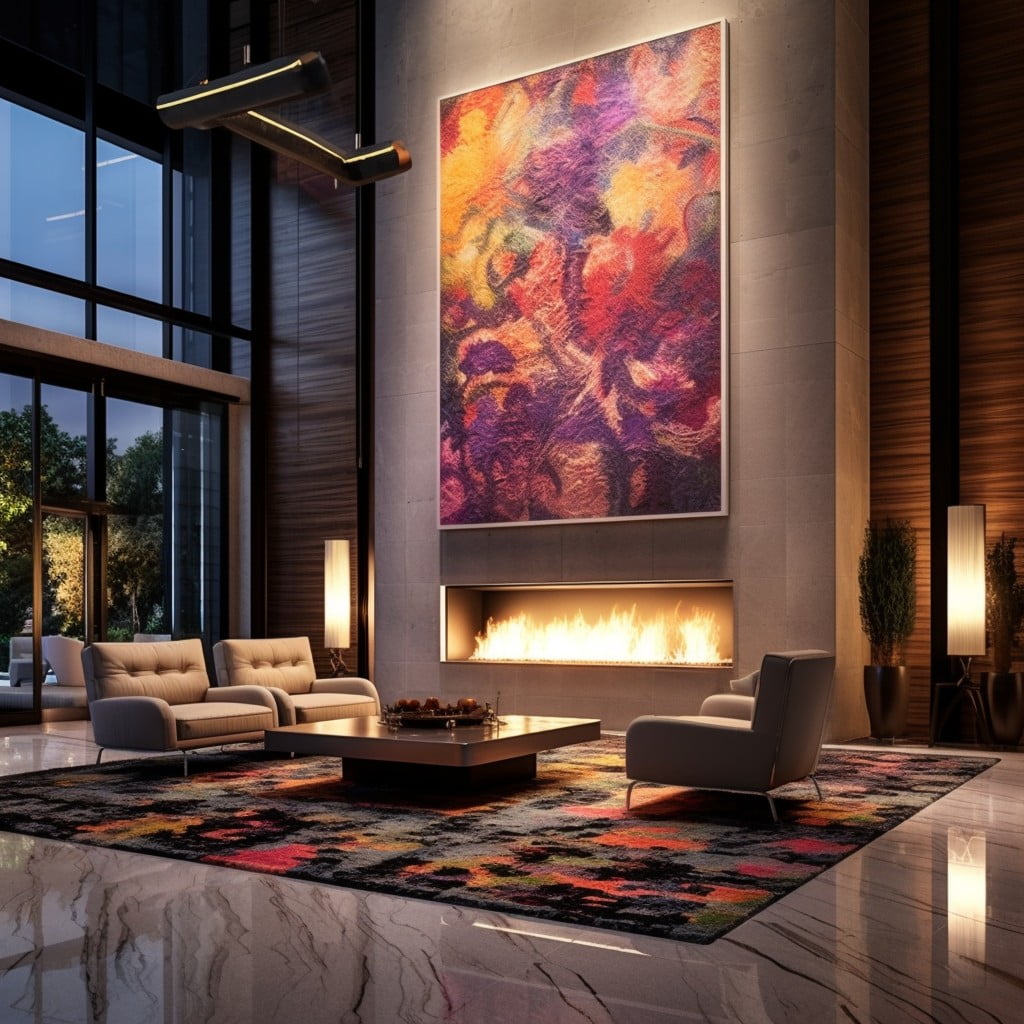
A fireplace can effortlessly emanate warmth and hominess, creating an inviting atmosphere for guests. Opt for a modern design that complements your overall decor scheme. The large, open space of the lobby is ideal for showcasing this feature.
1. Choose a Sleek, Minimalist Design: This ensures the fireplace integrates seamlessly with the hotel’s contemporary aesthetic.
2. Position for Comfort and Aesthetics: The fireplace should be positioned where it can provide warmth to the maximum area in the lobby while also being visually inviting.
3. Opt for Eco-Friendly: Consider eco-friendly options like ethanol fireplaces that provide heat without the soot or smoke, maintaining the indoor air quality.
4. Use Heatproof Decorations: Decorate around the fireplace but ensure that all materials are heat-resistant and safe.
5. Regular Maintenance: To ensure the fireplace remains safe and visually impressive, regular cleaning and maintenance are essential.
6. Use the Fireplace as a Focal Point: Arrange seating around the fireplace to create a captivating and cozy focal point in the lobby.
Hang Attractive Chandeliers
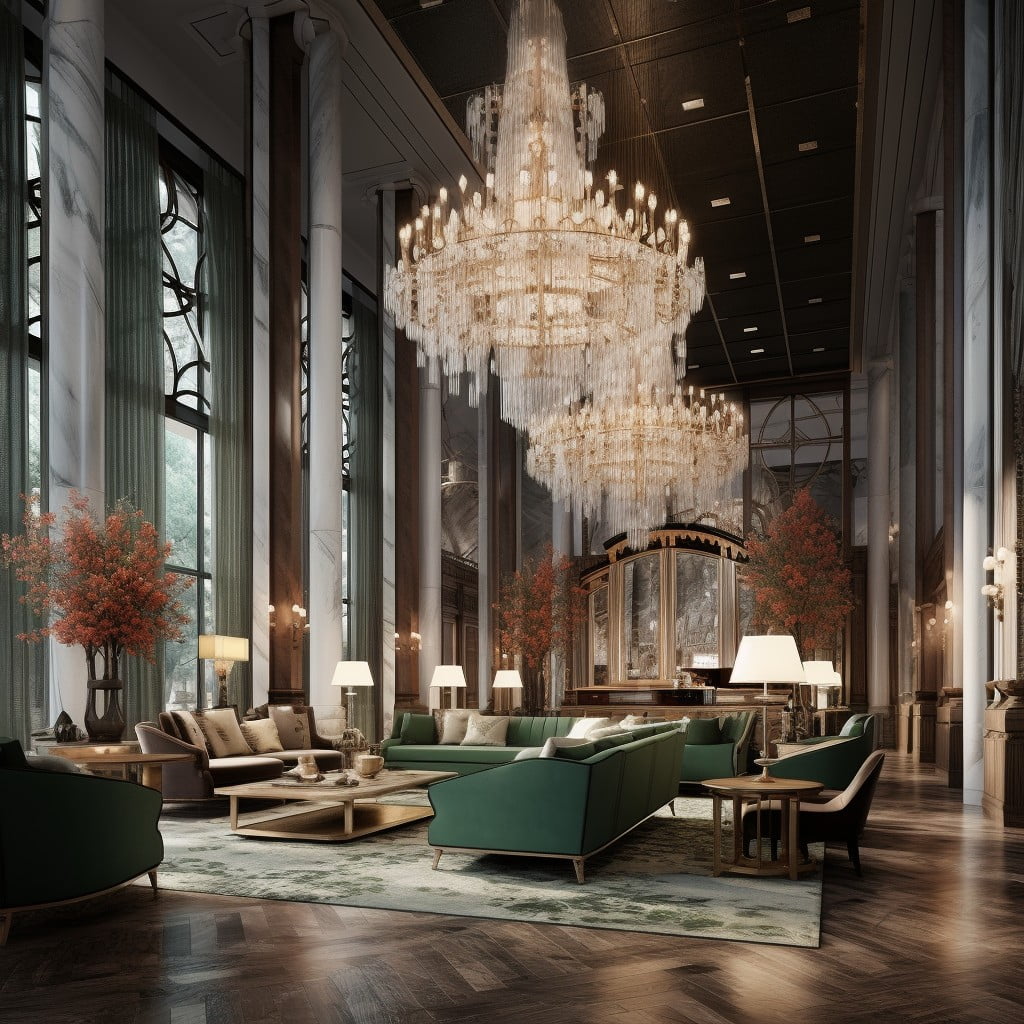
With the right positioning, a grand chandelier can draw the eye upward, instantly making a room feel larger and more inviting. Keep scale in mind; too small can appear out of sync while too large can overwhelm. Opt for LED bulbs for greater energy efficiency and pair chandeliers with dimmers to control the level of light.
Consider different styles to match the theme of your hotel. Crystal chandeliers can exude elegance in luxury suites, while industrial-style fixtures might suit contemporary spaces. In dining areas or lounges, grouping multiple pendant lights at different heights can create a stylish, modern alternative to traditional chandeliers.
Remember to verify ceiling strength before installation, to ensure it can adequately support the weight. Regular cleaning and bulb changes can keep your chandeliers looking their best, casting beautiful light patterns around the room and elevating the overall aesthetic.
Use Comfortable and Luxury Furniture
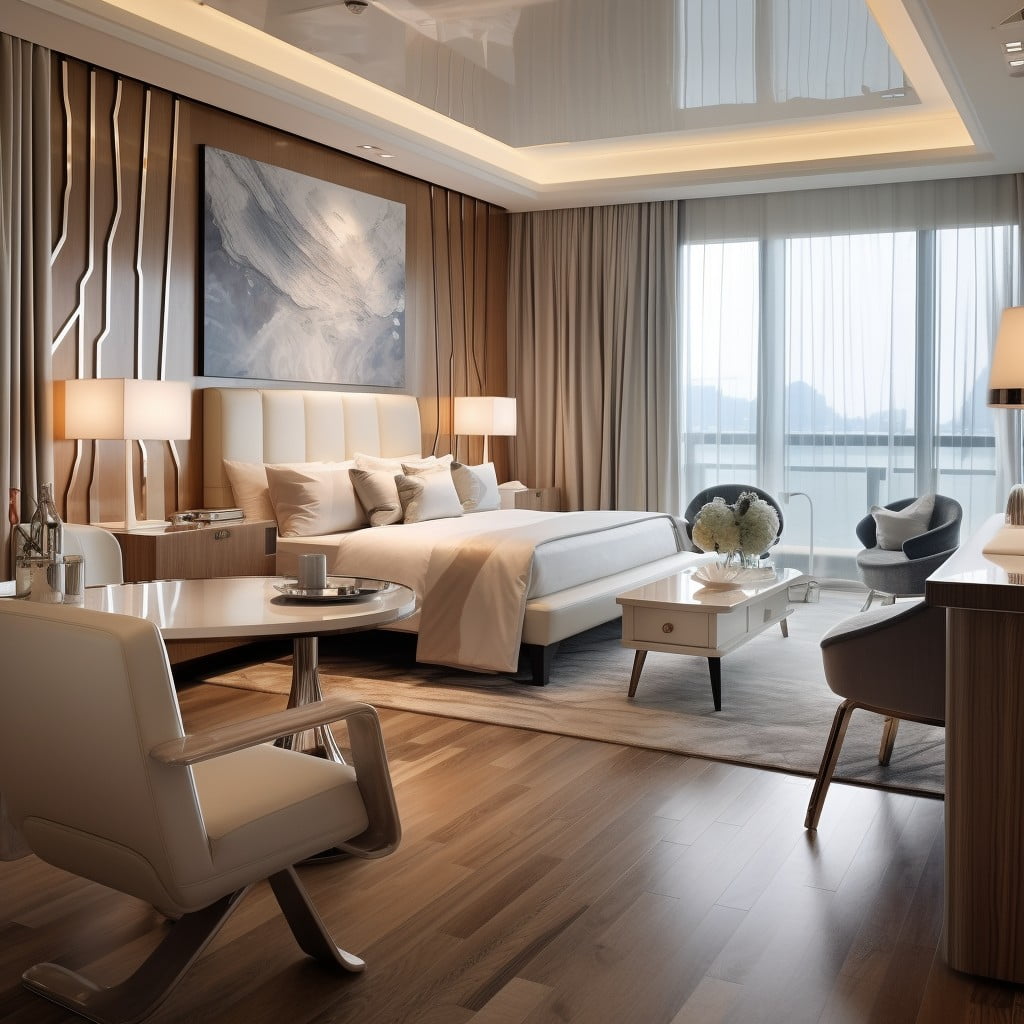
When selecting furnishings, comfort should never be compromised for aesthetics. Leather sofas, plush love seats, and cushioned bar stools offer an appealing mix of style and convenience. Consider chairs with added lumbar support for lobbies and waiting areas. In guest rooms, a king or queen-size bed with top-notch mattresses can have a significant impact on the overall guest experience.
Incorporate luxury via the use of select, high-end pieces. A gilded mirror, a sleek marble-topped coffee table, or an ornate armoire can make a memorable visual impact. These pieces not only augment the decor but also signal a commitment to quality and care for guest comfort.
Well-placed armchairs or lounges in hotel suites not only provide additional seating but also contribute to the overall elegance of the space. Cushions and throws on beds and sofas enhance comfort while adding a touch of sophistication.
Balance is crucial. Oversized furniture can swallow a room, while pieces that are too small may look out of place. Aim to harmonize the proportions between space and furniture for optimal aesthetics and functionality.
Remember that good design is quite subjective, and while it’s important to have an overarching theme, it shouldn’t come at the cost of variety. Providing guests with different experiences from room to room can add to the intrigue and allure of the hotel.
Add Plants for a Natural Touch
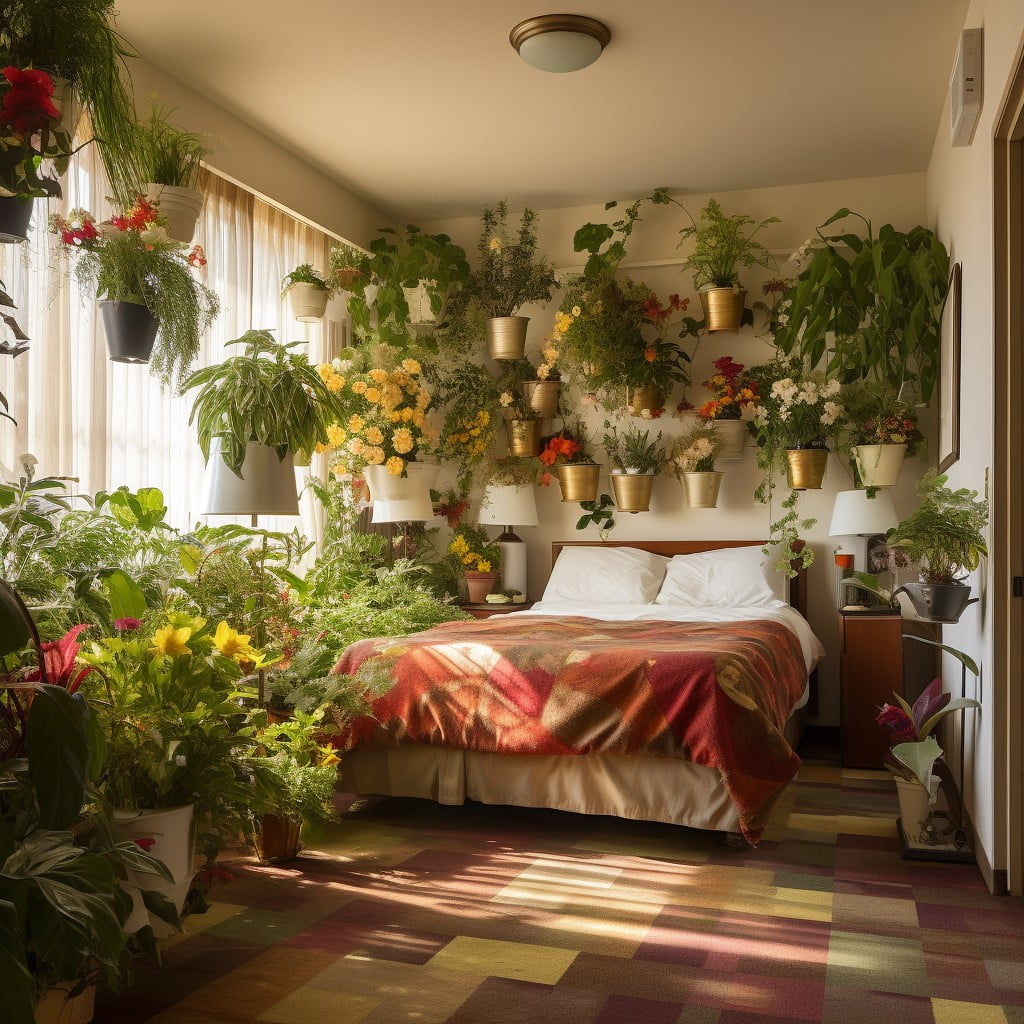
Introducing greenery into the hotel interior provides a unique, calming atmosphere and a visual break from the urban setting outside. This subtle natural touch subtly elevates the overall aesthetics of your establishment. It’s scientifically proven that plants enhance our mood by releasing oxygen and absorbing carbon dioxide.
Here are some handy pointers for beautifying your hotel spaces with plants:
- 1. Ornamental indoor plants, such as the Fiddle Leaf Fig or Rubber Plant, add height and dramatic visual interest to large spaces.
- 2. Low-maintenance succulents or air plants are perfect for tables in sitting areas or restaurant settings.
- 3. A living wall, filled with a variety of indoor plants – think mini ferns, spider plants, and philodendron – function as both art and air purifier.
- 4. Tall, slim plants like snake plants or dracaena are ideal for tight corners or narrow corridors.
Remember, plants require care. Highlight specific plants that thrive in your area’s climate within your hotel premises. Also consider selecting plants depending on the amount of natural light available in different spaces.
Decorate Rooms With Decorative Pillows
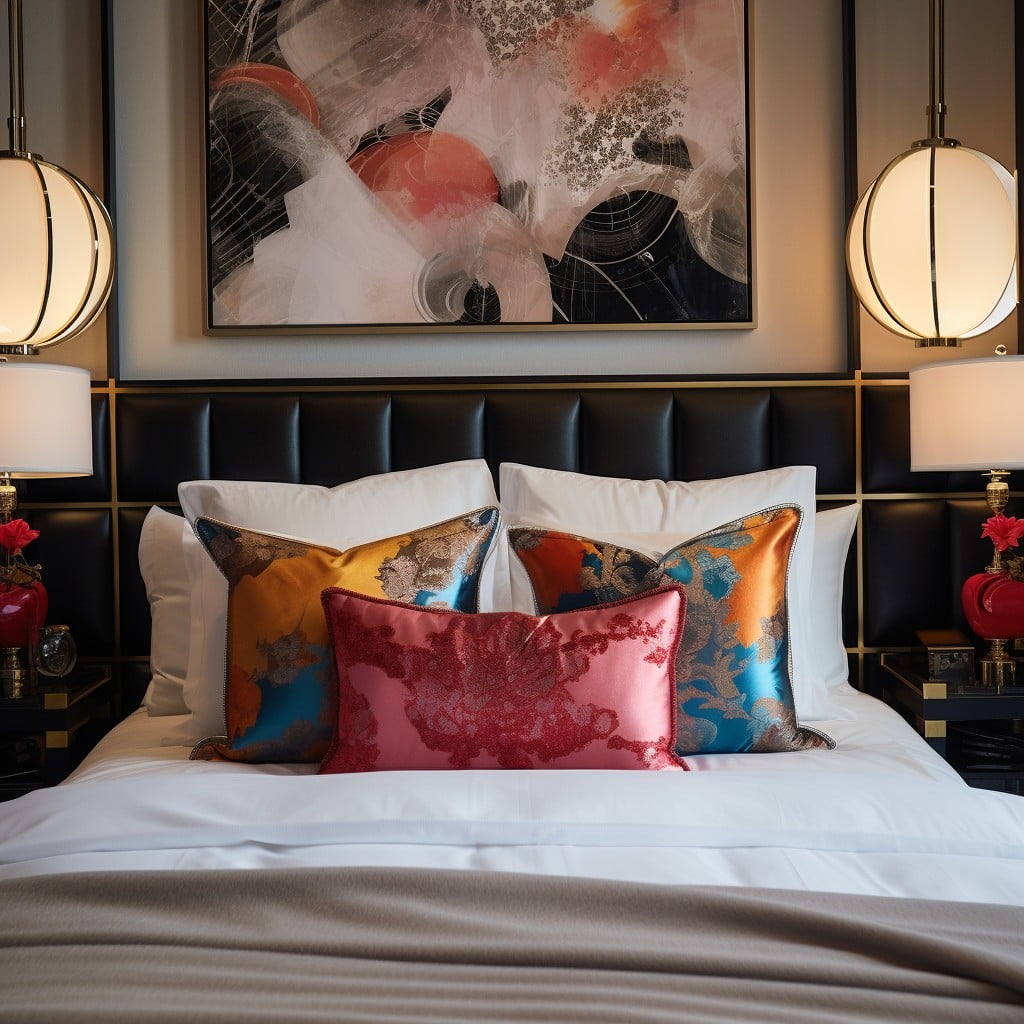
Implementing decorative pillows can be deemed as an art. It’s a fine balance to find the right mix that will complement the overall decor while bringing comfort to the guests. Start with larger pillows in the back and gradually decrease the size as you move towards the front.
Ensure the color palette synchronizes with the rest of the room. Pastels, neutrals, or bold hues may be chosen based on the underlying theme. Not only colors, but the texture also plays a role. Silks, cotton, velvet, or faux fur can amplify the appeal.
Shapes and sizes are pivotal in adding contrast and interest. Mix squares with rectangles, small with large. In terms of patterns, a combination of solid and printed pillows can work wonders. Remember, less is more. An overcrowded bed or sofa can be off-putting. So, strive to achieve that minimalistic yet cozy ambiance.
Finally, regularly fluff and rearrange them to keep the room looking fresh and inviting. Comfort should be the priority when considering decorative pillows. Hence, select pillows with varying levels of firmness to cater to the guests’ diverse preferences.
Incorporate a Stylish Bar Area
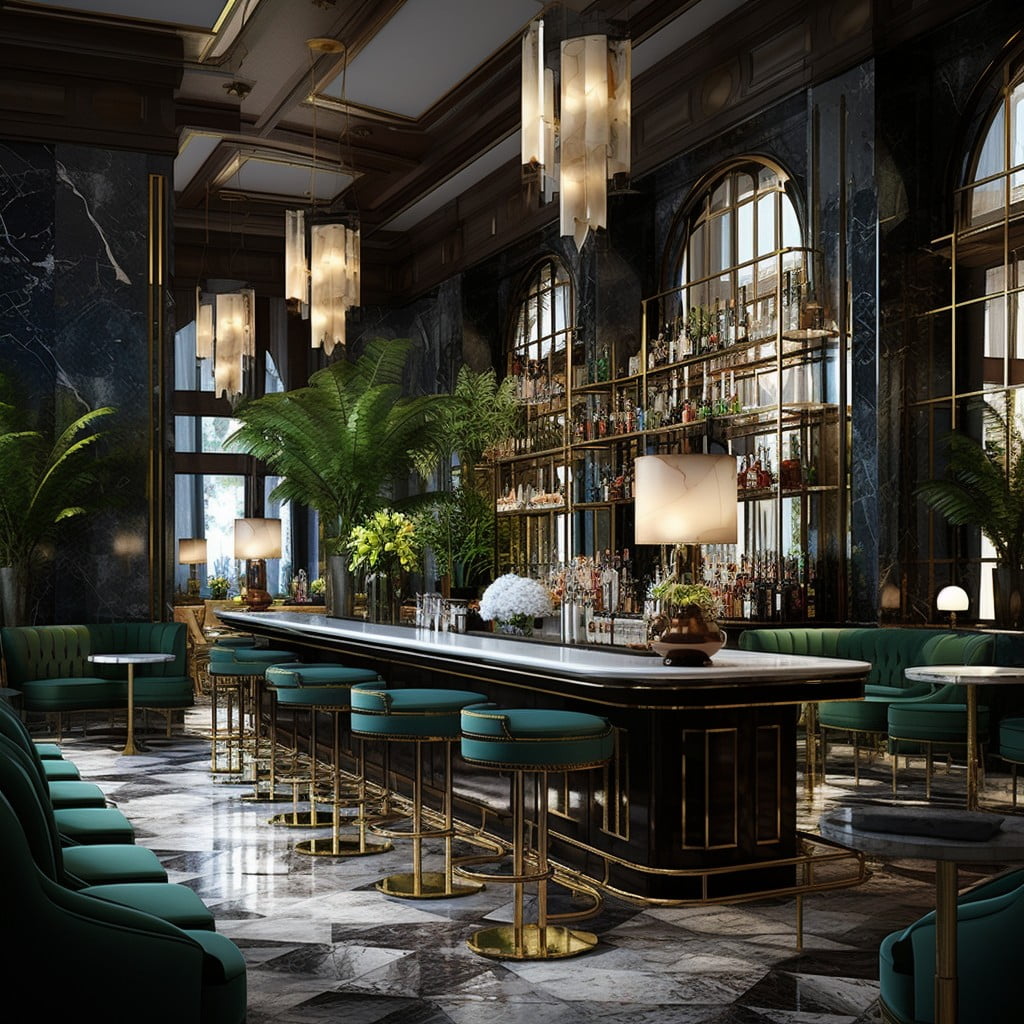
Without a doubt, the allure of any sophisticated hotel lies partly in its ability to afford guests some indulgence and relaxation. Offering a spot where visitors can unwind after a long day is key.
A well-furnished bar area not only serves to quench thirst but also serves as an excellent gathering spot where guests can socialize. Leveraging statement pieces such as a luxurious marble countertop or a backlit wall displaying a range of premium liquors will create an inviting atmosphere.
Seating arrangements are equally important. Providing various options, from stools for those who prefer to sit at the bar, to comfortable lounge chairs strategically placed around smaller tables, can cater to different guests’ preferences.
Another point to consider is the lighting which, when done correctly, can create a relaxed, warm ambiance. Opt for adjustable lighting to accommodate both daytime brightness and a dimmer, intimate mood for evening cocktails.
Lastly, don’t forget about the role of music in enhancing the bar’s ambiance. An excellent sound system, playing unintrusive background tunes, can contribute to a positive overall experience.
Display Local Artwork or Photography
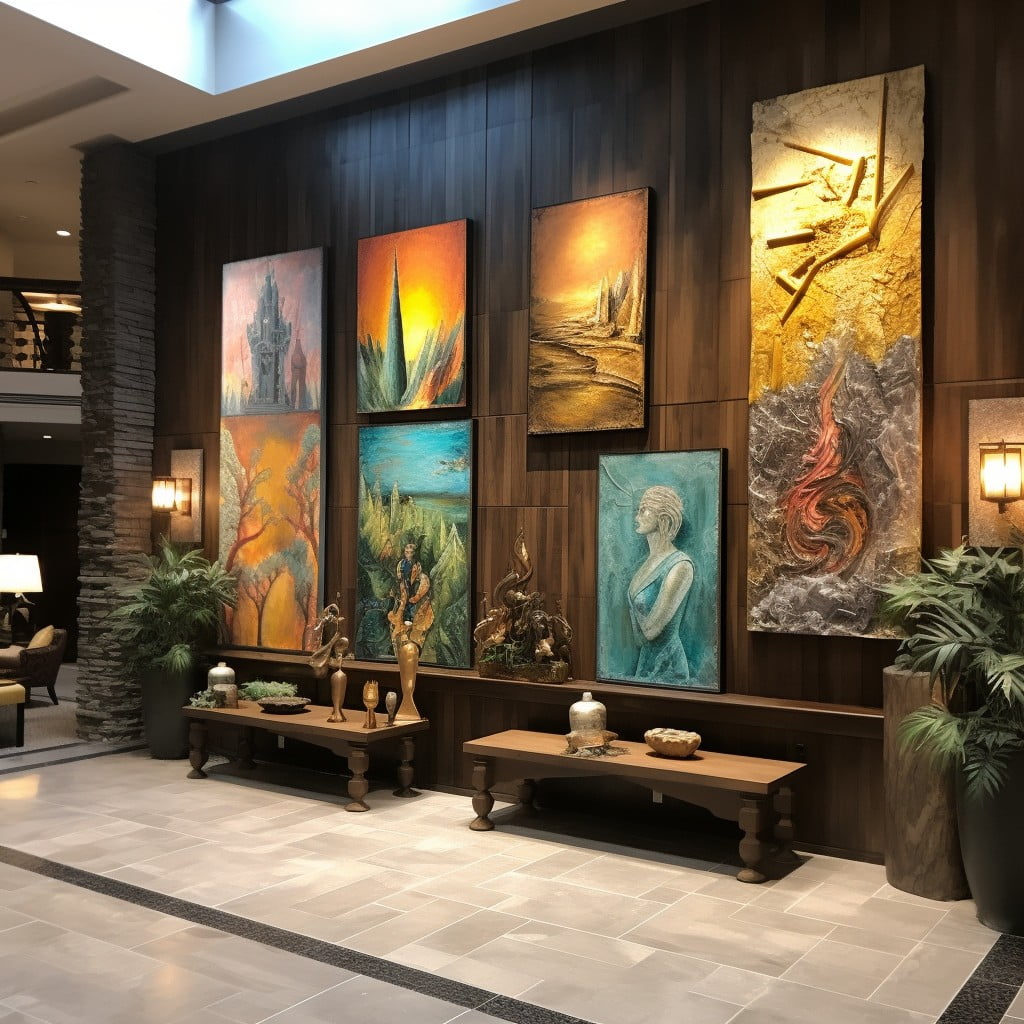
Highlighting regional culture and talent is a fantastic way to make your hotel stand out and resonate with guests.
1. Showcase Diversity: Diverse artworks can narrate a story about your local community. It’s an opportunity for guests to appreciate the local culture.
2. Promote Local Artists: Networking with arts communities can lead to collaborations, involving artists in interior design decisions. This fosters an authentic local aesthetic that cannot be replicated elsewhere.
3. Rotate Displays: Regular artwork rotation keeps interiors fresh. It provides returning visitors a new experience every time and can generate buzz around your art program.
4. Strategically Arrange: Artwork can double as a navigation tool inside the hotel. For instance, a memorable painting at the end of a hallway can become a useful landmark.
5. Themes: Set themes based on local events, seasons or holidays. Themed display can evoke strong emotional responses from your guests.
Remember, art is not just for decoration, but to stimulate conversation, provoke thought, and create a memorable experience.
Use Custom Patterned Carpets or Rugs
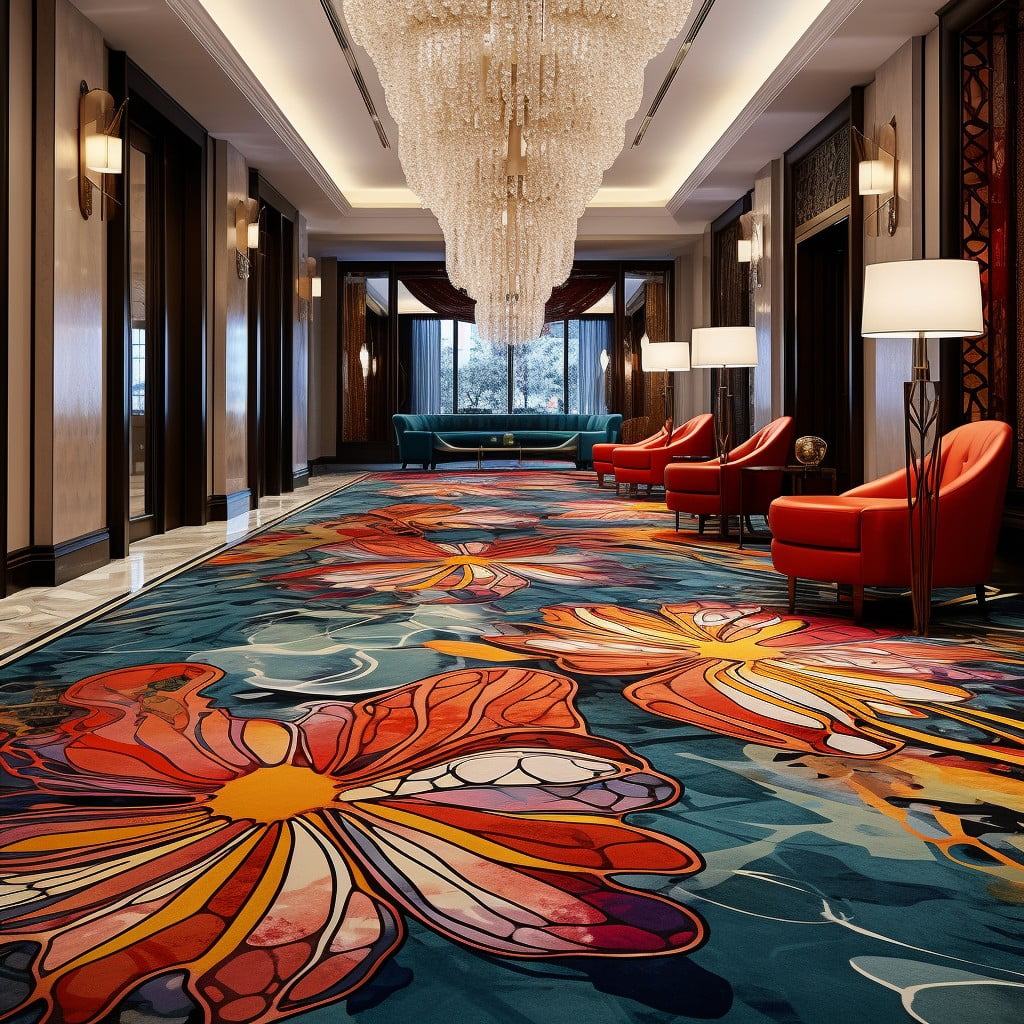
Bold and unique, custom patterned carpets introduce an element of surprise to any hotel interior and can set the tone for the rest of the décor. This is not just about aesthetics, it’s also a strategic move for wear and tear. The varied hues and intricate patterns effectively hide stains or damage caused by high foot traffic.
When selecting your carpet or rug’s design, consider the existing color scheme and style of the room. You can go bold with eye-catching geometric designs in a modern setting, or pick classic floral prints for a more traditional ambiance.
Similarly, the placement also demands careful thought. You could either use it to carve out “zones” within a larger space or add warmth and comfort to individual rooms. A rug under the coffee table in the lobby, for instance, instantly creates a welcoming seating area.
With custom options, the possibilities are endless. You can choose colors that align with your brand, opt for designs that echo local culture, or simply create incredible visual drama that leaves a lasting impression. Remember, each design choice is a chance to further your brand’s story and enhance guests’ experiences.
Add a Water Feature in the Lobby
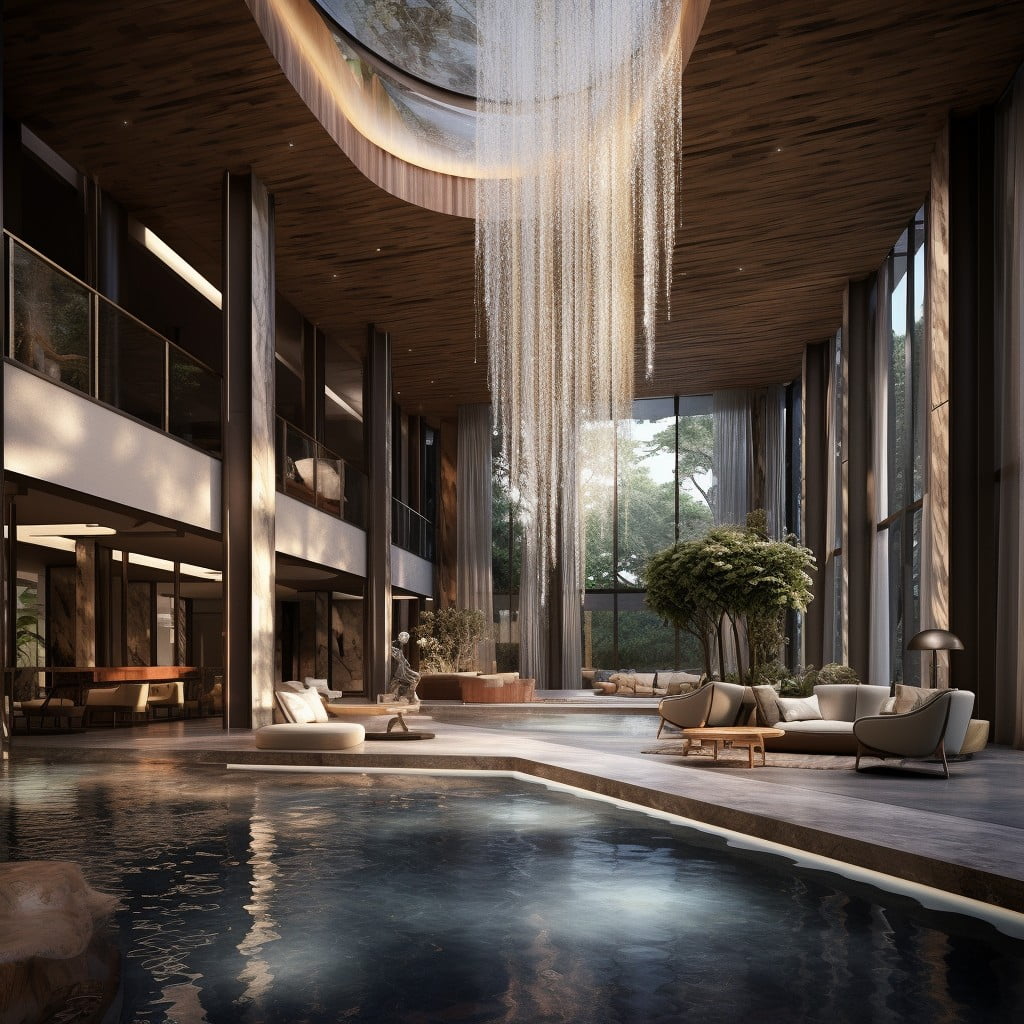
As a testament to nature’s beauty, water features infuse an atmosphere of tranquility and elegance. They function not only as eye-catching central pieces but also provide a soothing ambiance with their gentle, burbling sounds.
1. Custom Waterfalls: These could span the entire wall and can incorporate natural materials like stones for a more earthy vibe, or glass for a sleek, modern appeal.
2. Aquariums: A huge, well-maintained aquarium filled with colorful marine life can be both entertaining and relaxing for guests.
3. Fountains: There are many styles to choose from, including freestanding, tabletop, or incorporated in your interior landscaping.
These water elements help create a peaceful, luxurious setting that guests will remember and appreciate. Besides aesthetic enrichment, they also moisten the air, improving overall air quality in the lobby.
Incorporate Creative Room Dividers
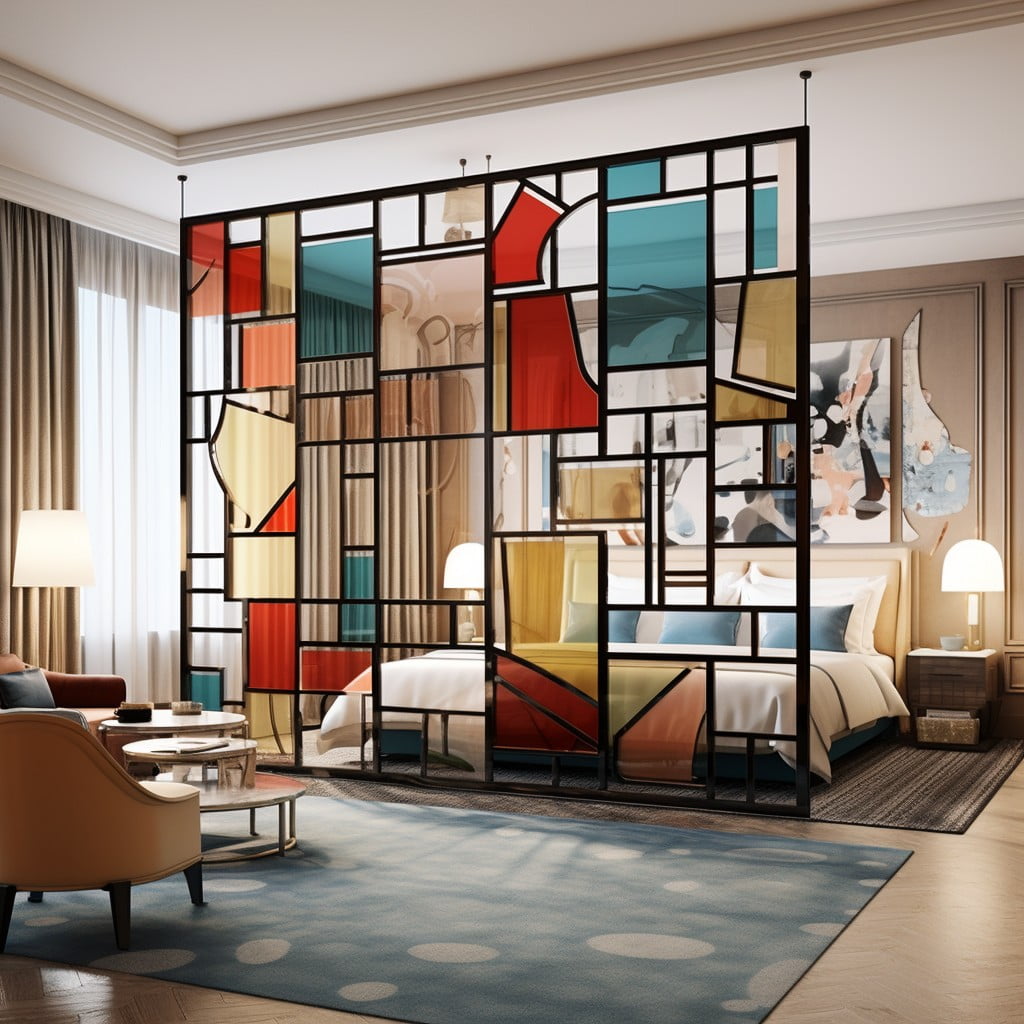
Imagination is key when it comes to room dividers. They can define separate spaces within a large suite, create privacy in a studio, or even conceal storage areas. Various types serve unique purposes.
Consider using bookshelves—they’re not only practical but also add a bit of charm. With their open structures, they allow light to permeate while acting as beautiful focal points.
Curtains offer another practical solution. A heavy, eye-catching fabric can add a dose of drama to a room while providing necessary seclusion.
Alternatively, folding screens can imbue an exotic flair. They’re low-maintenance, portable, and can easily transition between different design schemes.
Lastly, glass partitions retain an open space feeling without compromising privacy. It represents a perfect blend of function and aesthetics. Experts suggest using frosted or smoked glass for an elevated look.
Choose wisely to not only divide but conquer your hotel’s interior decoration.
Arrange a Mood-enhancing Scent
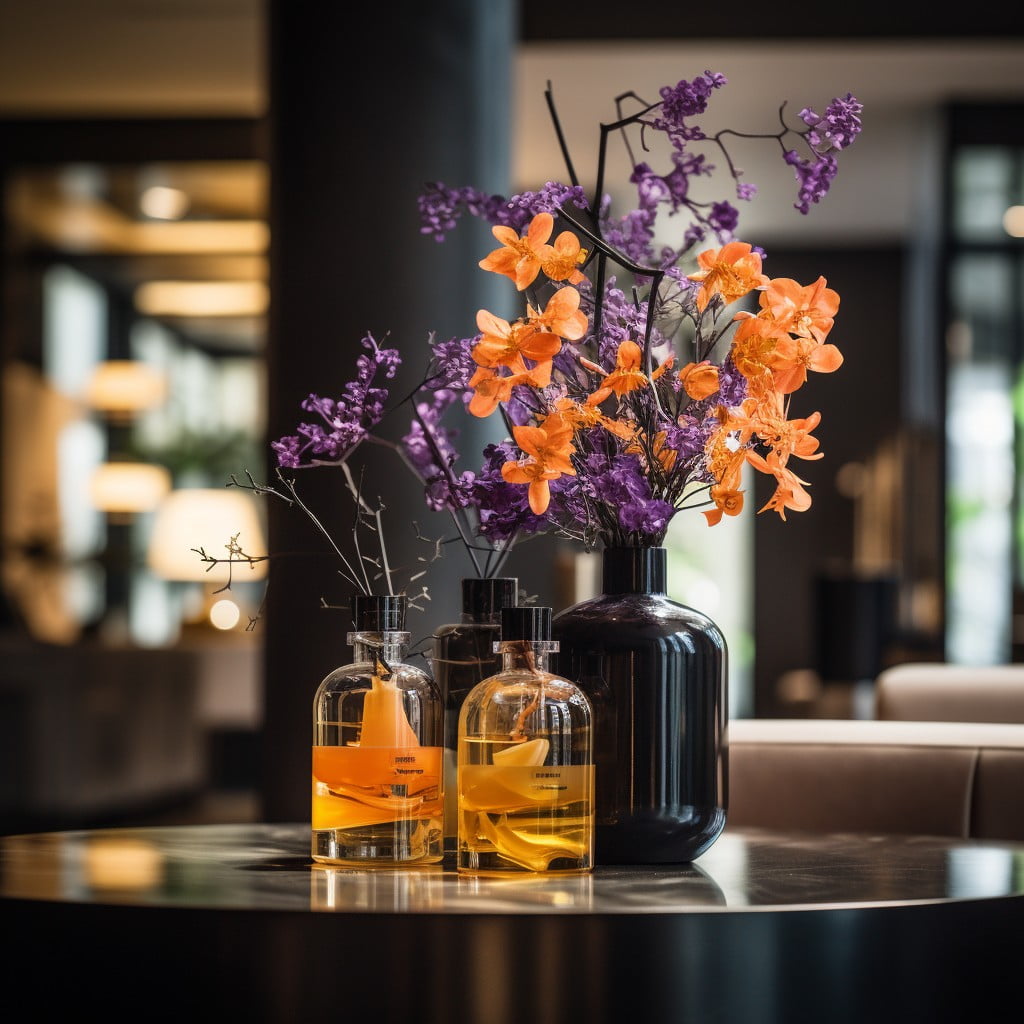
Fragrances have the power to influence mood and perception, thereby playing a key role in creating a welcoming atmosphere. Opting for scents that promote relaxation and tranquility is often best. Lavender, for instance, can help reduce stress and encourage calmness.
For a refreshing and invigorating ambiance, citrus-based scents are often ideal. They can inspire positivity and energize the surroundings. Meanwhile, woody or earthy fragrances like sandalwood or pine can evoke a sense of warmth and comfort. It’s essential to ensure these scents are subtle and not overpowering.
In addition, placing diffusers and air purifiers at strategic points such as the lobby, hallways, and rooms can ensure the scent is evenly distributed. In-room aroma diffusers could even be customizable for guests as a personalized feature.
For a unique touch, hotels can consider creating a signature scent — a unique blend that guests can immediately associate with the establishment upon entering. This scent branding approach can create lasting impressions and ensure unforgettable experiences.
Provide Readymade Cozy Corners With Books
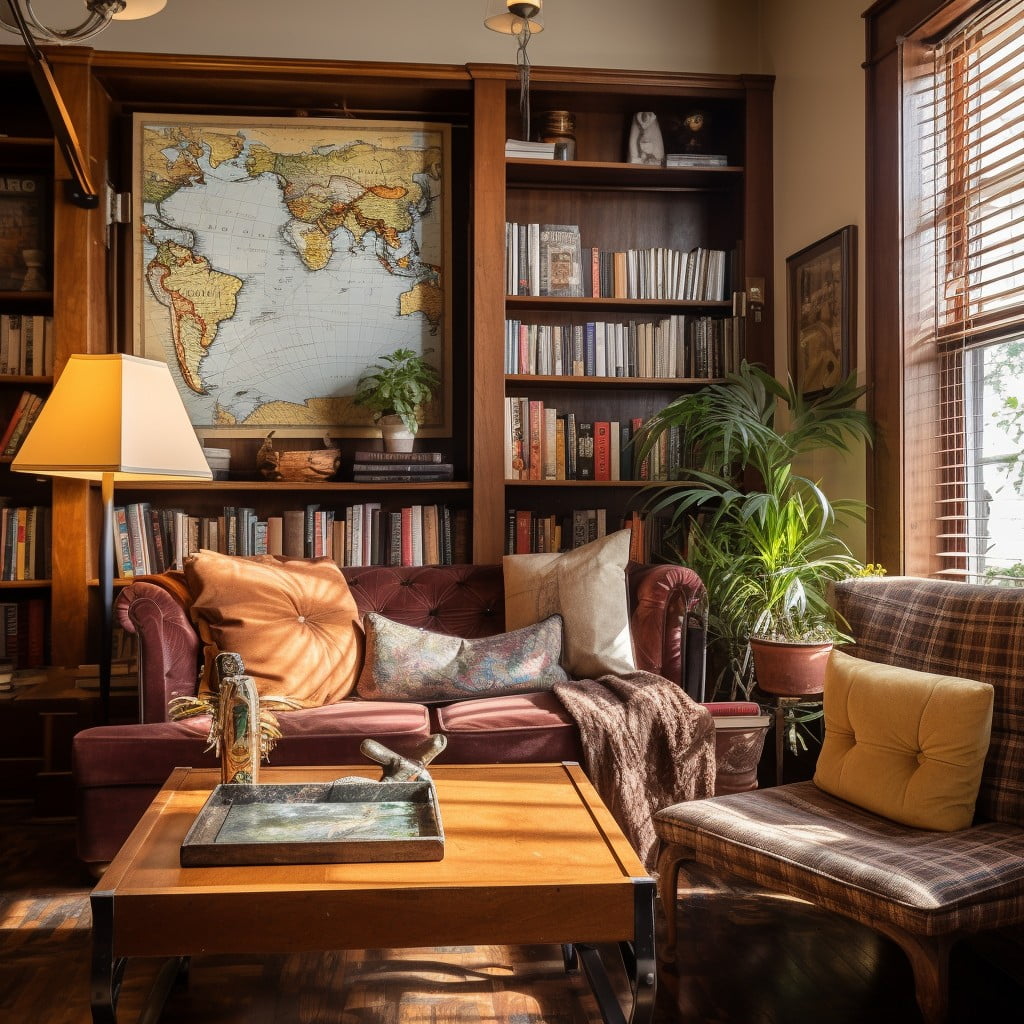
Crafting a small sanctuary for guests to escape into their favorite book encourages relaxation and a homely feel. Opt for plush, comfortable seating, like oversized armchairs or a luxe chaise lounge. Ideally, these spaces should be located near a window to benefit from natural light, perfect for reading.
Adding a warm throw and a stylish reading lamp intensifies privacy while contributing to the overall aesthetics. Lastly, showcase a diverse selection of books, magazines, and newspapers, catering to various interests and languages. This small touch makes for an inviting space, giving guests a reason to look forward to their return to the hotel after a busy day.
Install LED Lighting Accents
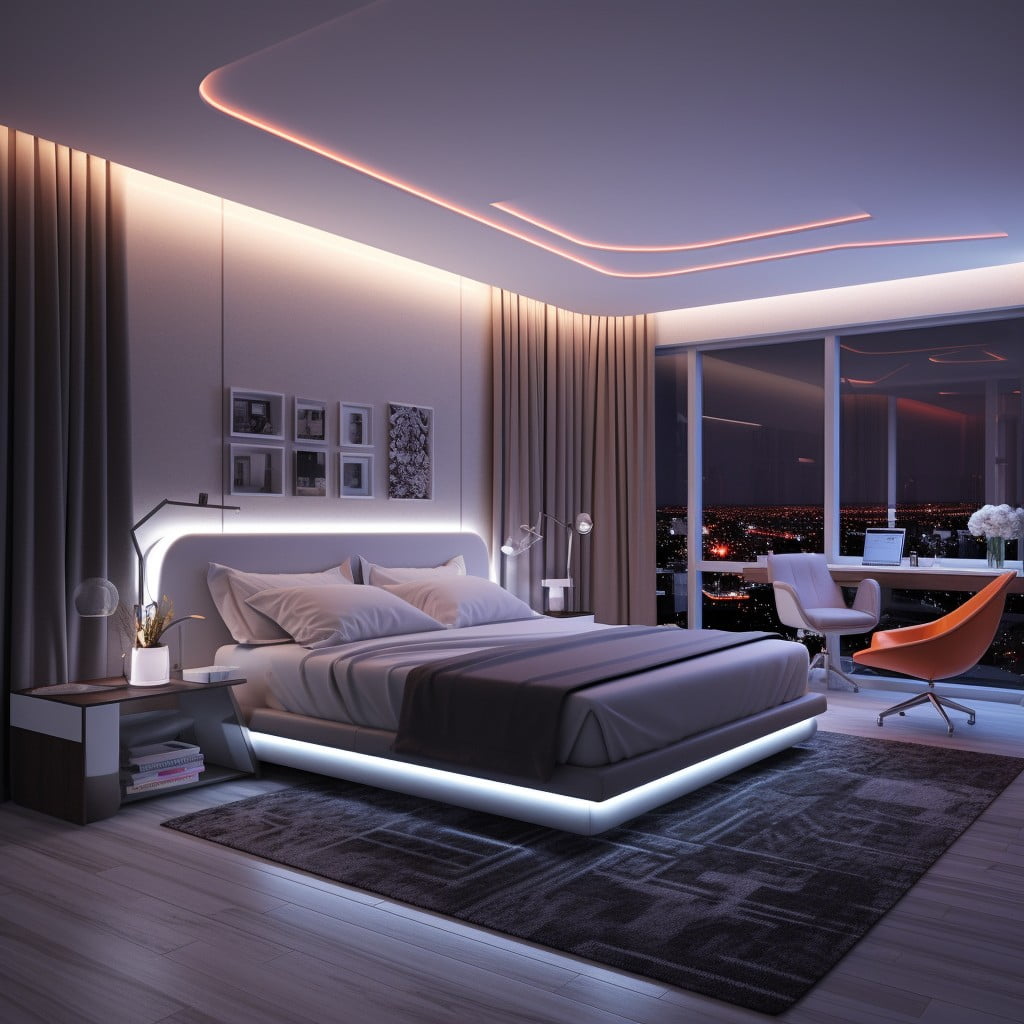
Strategically placed LED accents can dramatically transform a space, not only giving it a modern look but also highlighting architectural details and creating a warm, welcoming ambiance.
Here are some notable points:
- 1. Use them to highlight architectural details: LED lights can beautifully illuminate archways, columns or recessed walls, enhancing their prominence.
- 2. Consider backlighting: Backlighting can be used effectively to emphasize headboards in rooms, reception desks or bar areas.
- 3. Under-cabinet lighting: A classic application in kitchens and bathrooms, providing subtle lighting for tasks and creating a soft ambiance.
- 4. Outdoor accents: Light up walkways and entrances to create an inviting atmosphere and ensure safety.
- 5. Dimming Options: Ensures a flexible level of brightness, suiting both day and night times.
Remember, proper lighting not only illuminates but also creatively expresses the atmosphere of the hotel, adding sophistication and elegance.
Recap:
